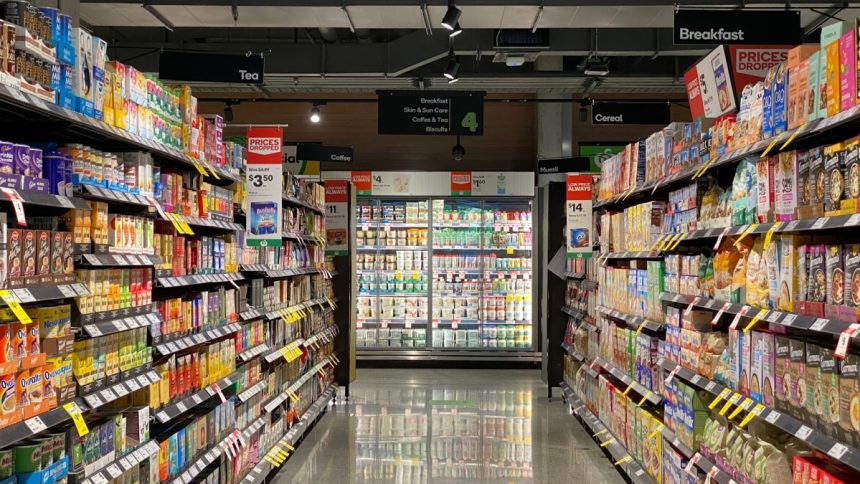In the CPG industry, margins are tiny, and cutting costs is always top of mind. At the same time, consumer tastes and trends change quickly, and you need to be able to innovate on a dime. Add it all up, and what that means is that your company needs to be impossibly efficient. You need to somehow cut corners while staying ahead of the latest technology to keep customers satisfied. Here are the best ways to optimize your operational efficiency without maxing out your budget.
1. Optimize Your Packaging
Shipping and storage are expensive, so why are you paying extra cash to handle boxes full of air and heavy, clunky packages? Optimizing your packaging could save your organization millions in shipping and storage costs. One way to maximize efficiency is to use an algorithm that calculates the optimal package type and size for each product or shipment. Another is to switch to a new packaging manufacturer that offers more appropriate options for your needs.
In the process, you could delight your customer with something new, novel, or at least more environmentally friendly. For example, many companies are now offering alternative, sustainable packaging materials such as mesh bags and reusable fabric mailers. As a bonus, some of these materials (like cloth) are collapsible and can take up less space than boxes or poly mailers. If these can be returned, you could also go circular, and save cash on procuring new packaging materials.
2. Optimize Your Portfolio
Be honest: how many SKUs and units are you still producing or storing that just aren’t selling as well as you’d hoped? When was the last time you evaluated your product portfolio, and eliminated outdated or unpopular colors, flavors, or other varieties? If the answer is any longer than a few months ago, it’s probably time to take another look at your stock. It’s crucial to be ruthless, eliminating unprofitable products, and any that consume too many production resources.
One way to optimize your product portfolio successfully is to deploy predictive analytics. Inventory management systems and other AI-powered technologies can help you predict what will sell, flag what won’t, and even develop new products. That said, you may still have to use your best judgment and keep certain core or flagship products in stock. Even if your numbers are low, pausing or discontinuing production of the wrong products can run the risk of costing you loyal brand fans.
3. Streamline and Diversify Your Supply Chain
Supply chain setbacks, like natural disasters, political conflicts, and resource shortages can really throw a wrench in your plans. For maximum efficiency, you need to build a business that’s resilient against anything that could close roads or block a canal. Smart supply chain managers know that the first step is to have a plan for sourcing materials from multiple locations. That way, if one supplier can’t reach you, you won’t be scrambling at the last minute for a replacement.
Another strategy for improving supply chain efficiency is to keep the goods a lot closer to the customer. That means having multiple regional warehouses that hold smaller quantities of inventory in key locations. This can be a challenge, especially for smaller brands that just don’t have that much inventory to distribute. The good news is that it’s easier than ever to connect with a third party logistics provider, or 3PL, who can handle the details.
4. Partner With a 3PL
Contracting with a 3PL isn’t just useful for building a regional supply chain. A 3PL can also help you speed up your internal operations, and find new ways to reduce operating costs. The right 3PL can help maximize warehouse efficiency and automate all your picking, packing, shipping, and handling processes. Some companies also give you access to advanced analytics and cost-saving special relationships with delivery partners.
Partnering with a 3PL can also make your business infinitely more scalable if you don’t have your own expansion infrastructure in place. Your 3PL partner might already have facilities available for your use in regions or countries you hadn’t even considered yet. All that said, DTCs should take great care in choosing the right partner, since they can make or break the customer experience. Your products need to arrive on time and in good condition, or the customer will always blame you.
5. Enhance Your Training Program
Sometimes, what you think is a technology or systems problem is actually a people problem. If you’ve implemented all the suggestions above and operations are still slow, it’s time to look at your staff. Consider your training program, and whether it’s as up-to-date as the picking and packing robots on your warehouse floors. What training are your new hires getting, and when was the last time your more senior workers got to learn something new?
Consider creating and implementing an interactive training program that can be customized to each worker’s needs. Newer AI tools are making it easier and cheaper to offer highly engaging, often app-based trainings. Some tools even use augmented reality, so workers can see detailed 3D visuals of how things look on the warehouse floor. A solid training program won’t just enhance your worker efficiency, it can also improve job satisfaction and employee retention.
Smarter, Better, Faster, Stronger
When it comes to enhancing efficiency in CPG, the name of the game is technology. However, it’s not necessarily about having the highest-tech robots or the most efficient enterprise software. Instead, it’s important to streamline where it counts, using advanced algorithms to look for the most efficient options. Rather than trying to use tech to move faster, use it to move smarter. You won’t need the most advanced warehouse robots if your tech can speed things up with tiny hacks.
Lynn Martelli is an editor at Readability. She received her MFA in Creative Writing from Antioch University and has worked as an editor for over 10 years. Lynn has edited a wide variety of books, including fiction, non-fiction, memoirs, and more. In her free time, Lynn enjoys reading, writing, and spending time with her family and friends.















